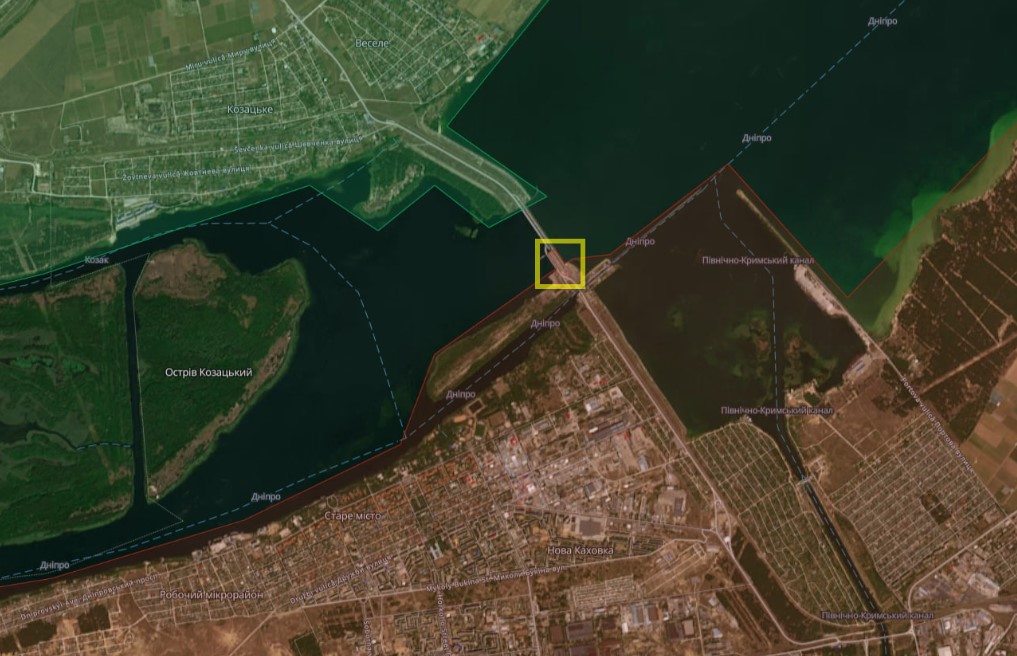Who Blew up Kakhovka HPP?
Foreign media do not indicate who is responsible for the destruction of the Kakhovka HPP. Instead, they state say that the author is unknown. This has caused indignation within the Ukrainian society, which has been defending itself from the Russian attack for more than 9 years. The Minister of Foreign Affairs Dmytro Kuleba was appalled by “some media report ‘Kyiv and Moscow accusing each other’ of ruining the Kakhovka dam. It puts facts and propaganda on equal footing,” he said.
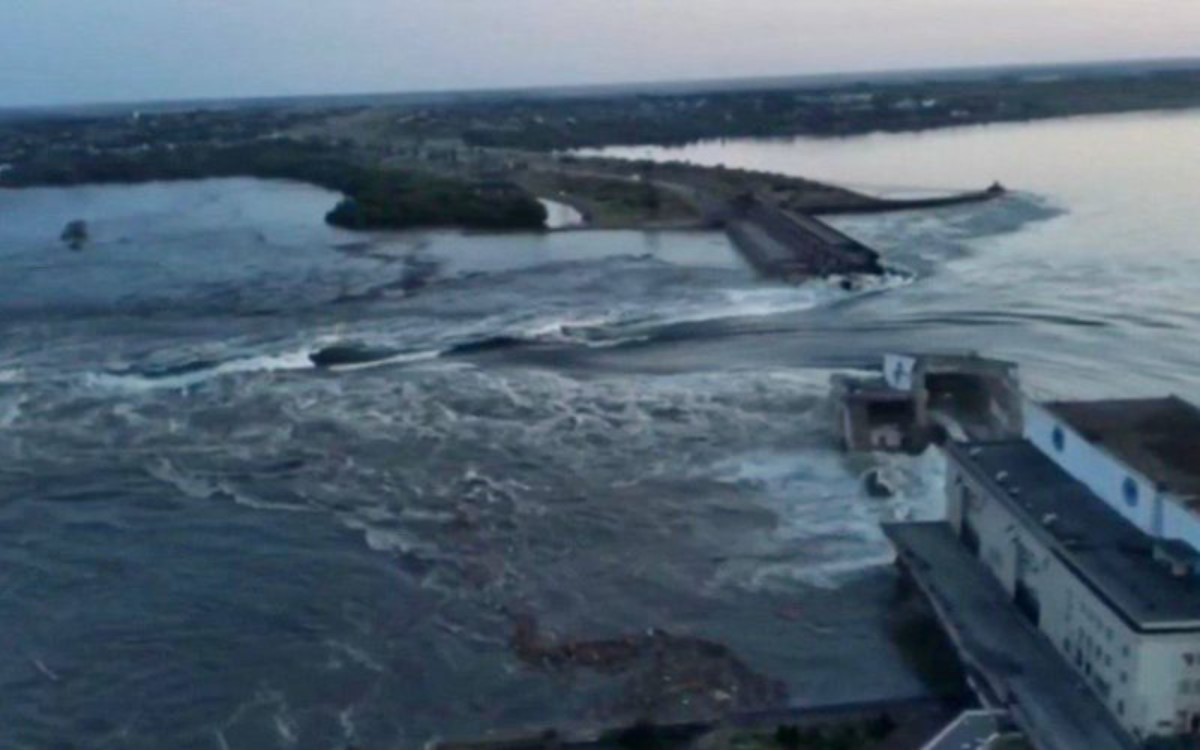
The Centre for Strategic Communication has collected all the facts that indicate the involvement of the Russian occupation contingent in the crime.
1. Russian occupation troops controlled the hydroelectric power plant
Russian troops captured Nova Kakhovka and the Kakhovka HPP at the end of February 2022. They took the personnel hostage and almost immediately interfered with the technical work of the facility: they blew up the structures of the North Crimean Canal to supply water to the temporarily occupied Crimea.
After the seizure of the HPP, the occupiers began to place command posts on them, in particular, the control point of the Southern Military District of Russia was deployed there. The invaders did not make efforts to maintain the energy facilities in proper condition. They did not give the opportunity to repair two hydraulic units that were out of order.
According to the Main Intelligence Directorate of the Ministry of Defence of Ukraine, the invaders mined the Kakhovka HPP back in April 2022. The next month, they began to discharge water from the reservoir, which even led to the flooding of the embankment in a neighbouring village.
During the deoccupation of the right bank of the Kherson region, in August last year, the Armed Forces of Ukraine put a bridge near the HPP out of order with high-precision strikes, without damaging the dam and other facilities of the HPP. On September 5, the occupiers turned off the Kakhovka HPP, as a result of which parts of Kherson and Zaporizhzhia oblasts were left without electricity.
2. Russians used the control over the dam to harm Ukraine
In February 2023, while maintaining control over the HPP, Russians deliberately discharged water from the reservoir to drain it and cause economic damage to Ukraine, as well as to leave Ukrainians without access to drinking water. After the partial destruction and deliberate opening of the locks of the Kakhovka HPP by Russians, Ukraine was losing thousands of cubic metres of water every day. The Kakhovka reservoir became shallow by 1.4 m. The Ukrainian authorities called on the international community to put all available means of pressure on Russia to close the locks and restore hydraulic structures to prevent environmental and social catastrophe.
3. Only Russia could physically place a large number of explosives on the HPP
The destruction of the dam was carried out by blowing up a huge number of explosives placed by Russians in advance. The shelling by Ukrainian MLRS, which Russian propaganda uses to explain the destruction of the dam, is incapable of inflicting such damage.
4. Ukraine has already warned the world about Russia’s intentions to blow up the dam
In autumn 2022, information appeared about Russia’s intentions to blow up the dam of the Kakhovka HPP to prevent the summer-autumn campaign of the Defence Forces in the south of Ukraine. At that time, the invaders additionally mined the locks and supports of the Kakhovka HPP. At that time, the Ukrainian authorities drew the maximum attention of the world community to this threat and its consequences. President of Ukraine Volodymyr Zelenskyy addressed the European Council on October 20. Kyiv proposed to place an observation mission at the facility.
Before fleeing from the right bank of the Dnipro, the Russian invaders carried out the deportation of the local population under the guise of “evacuation.” They intimidated people with a possible blow-up of the Kakhovka HPP. When retreating in November, the invaders damaged the dam, which is why the water level in the reservoir began to fall. After retreating to the left bank, Russians retained control over the main facilities of the Kakhovka HPP.
5. Even the Russian occupiers themselves confess to the crime
The Russian invaders themselves confess to the crime. In particular, the Russian soldier Guzenko, who serves in the occupation contingent in Kherson Oblast, confirmed this and urged to blow up other dams on the Dnipro.
The Ministry of Defence of Ukraine reported on the presence of facts and evidence of the movement of explosives and the use of appropriate equipment for a controlled remote explosion by Russians. According to preliminary information, servicemen of the 205th Separate Motor Rifle Brigade of the Russian Armed Forces may be involved in the destruction of the Kakhovka HPP (military unit 74814, point of permanent deployment — Budyonovsk, Stavropol Krai).
At the same time, Russian propaganda spreads versions that contradict each other.
The Russians initially denied the fact of the explosion, then moved on to the traditional accusations against Ukraine.
Around 3 a.m., when explosions broke out at the HPP, the head of the Russian occupation administration of Nova Kakhovka, Vladimir Leontiev, urgently came out with a “refutation.” His statement that everything was “quiet and calm” in the city was published by the federal news agency RIA Novosti.

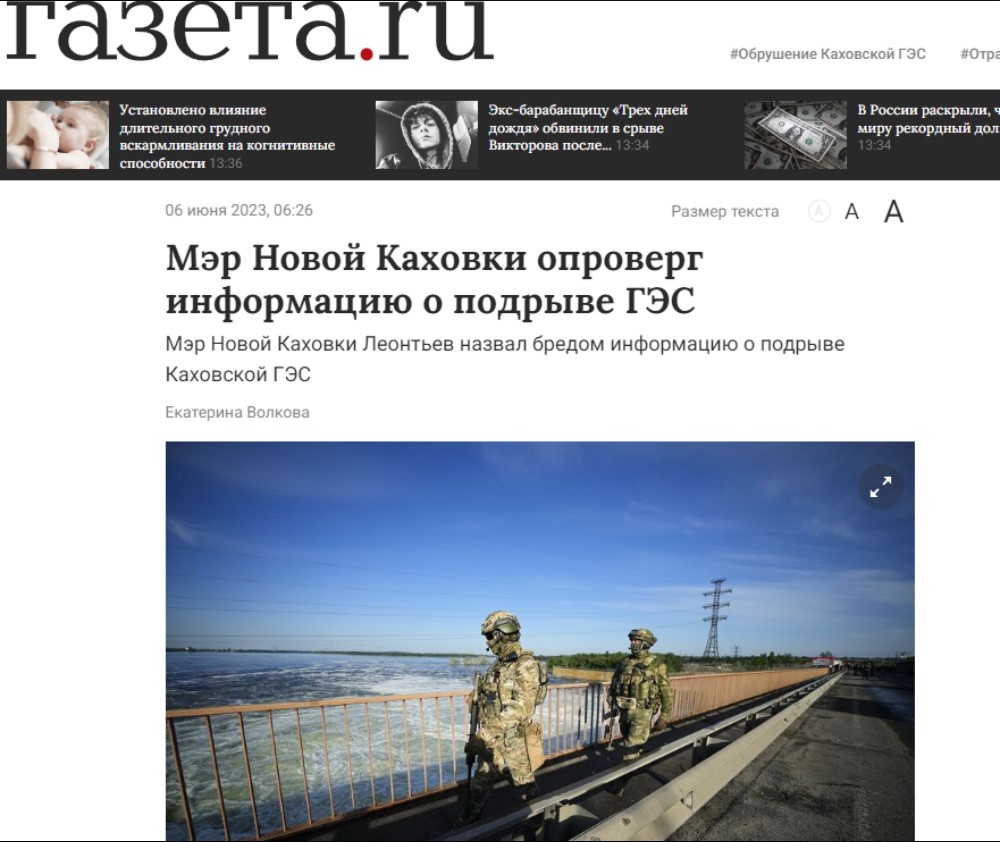
It was quoted by more than 150 Russian websites, Telegram channels, and social networks.

The peak of publications came on the Tuesday morning: the distribution of the statement continued even after the publication of videos by Telegram channels and a number of sites of the consequences of the explosion.
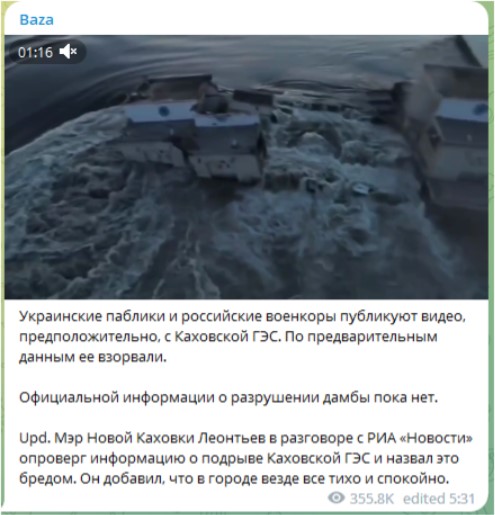
Even after the “concept” was changed to the exact opposite.
Around 7 a.m., Leontiev reported a “series of strikes” on the Kakhovka HPP that resulted in an “uncontrolled discharge of water.”
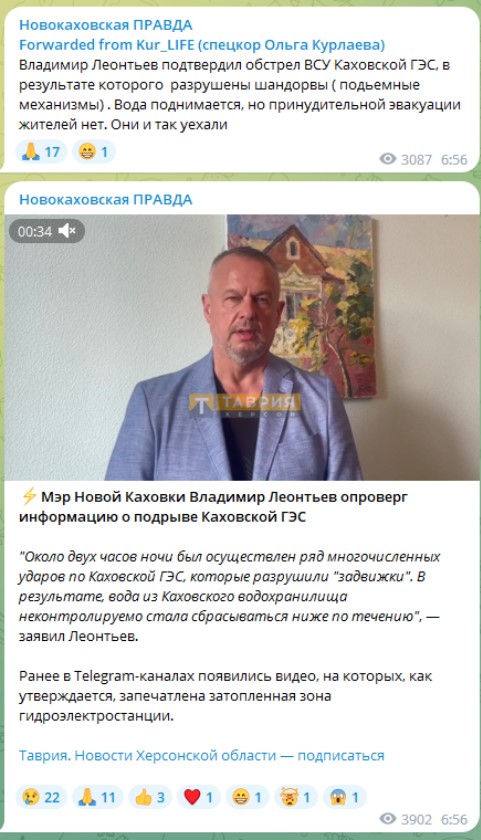
Telegram channels of the Russian “war correspondents” reported the “strike of the Armed Forces” as early as 3 a.m. After Leontiev’s statement, the Kremlin’s entire propaganda machine switched to this version, with some variations.


Putin’s spokesman Peskov rejected the accusations against Russia and said that the sabotage was allegedly committed by Ukraine due to the fact that its “counter-offensive is over.”
The “version” voiced by Peskov became one of the key ones, but not the only one. Russian propagandists, as usual, posted several statements in the information field, which should simultaneously explain to Russians that the blow-up of the HPP was allegedly “beneficial to the Ukrainians,” but at the same time harmed Ukraine, and not the Russian military in the occupied territory. War correspondents, Z-bloggers, anonymous Telegram channels explained the reasons for the “Ukrainian attack”:
● distracting attention from the lack of success at the front (variation: due to the failure of the counteroffensive);
● an attempt to destroy Russian fortifications and minefields on the eve of the counterattack;
● an attempt to create problems with water, provoke a food crisis and environmental catastrophe in the occupied territories, in particular in Crimea;
● an attempt to garner stronger support from the West by accusing Russia of environmental crimes.

The propagandists do not have a single version of the technical part: Z-bloggers wrote with the same confidence about the missile strike, MLRS, and the consequences of last year’s shelling with HIMARS, and the deliberate raising of the water level by Ukrainians for additional pressure on the dam.
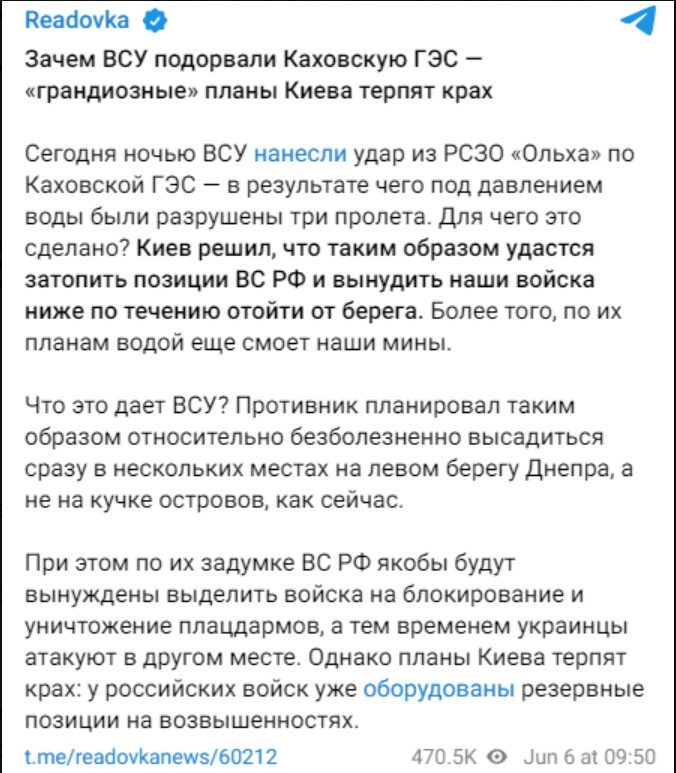
Among the “calming” messages, the following can be distinguished:
● the Russian military did not suffer, the destruction only harmed the positions of the Armed Forces of Ukraine;
● the threat to the civilian population in the occupied territories is exaggerated, there will be no major evacuation.
The promotion of the second statement was entrusted to representatives of the occupation administrations, in particular the above-mentioned Leontiev and the so-called “head” of Kherson Oblast Vladimir Saldo. The victorious statements about the successes of the Russian military against the backdrop of the flooding of the territories were issued by the war correspondents and the odious member of the State Duma Aleksey Zhuravlyov.
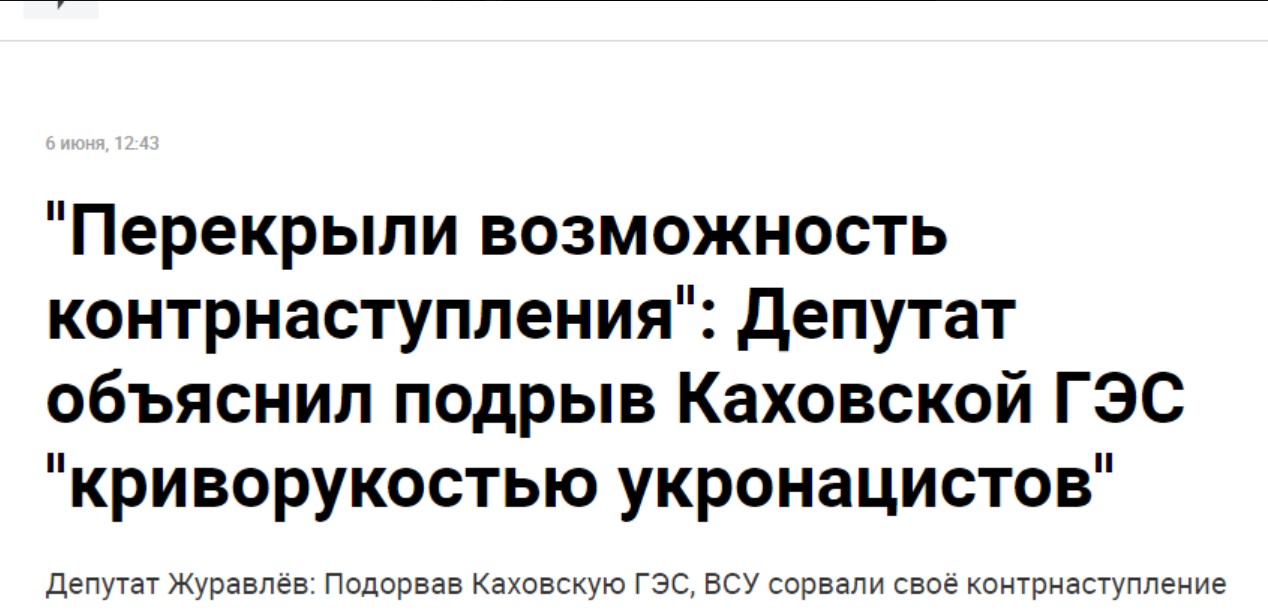
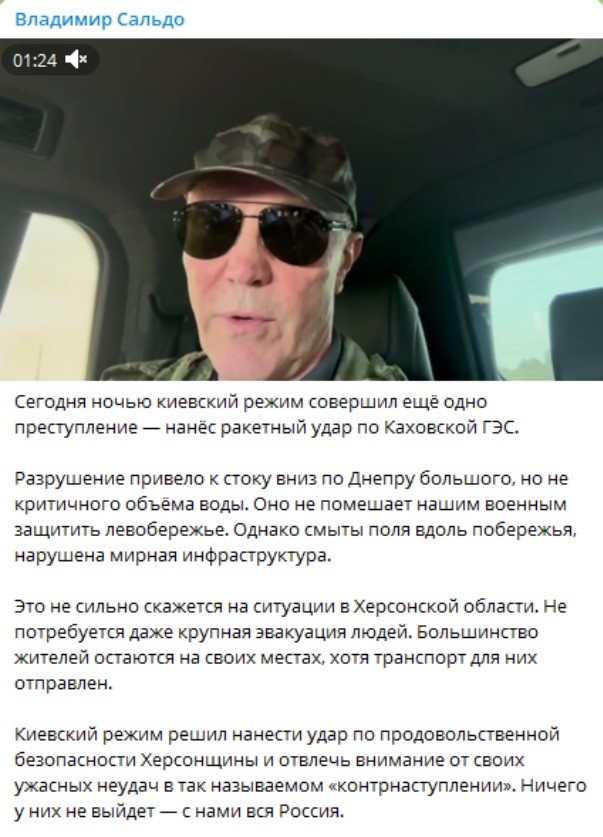
Russian top propagandists and pseudo-Ukrainian anonymous Telegram channels joined the promotion of the conspiracy theory that the explosion at the HPP was “a new Bucha that Ukraine needs to strengthen support from the West.” Messages with “arguments” were posted by “Resident,” “Legitimny,” channels of Vladimir Solovyov, Sergey Mardan, and other propaganda resources.

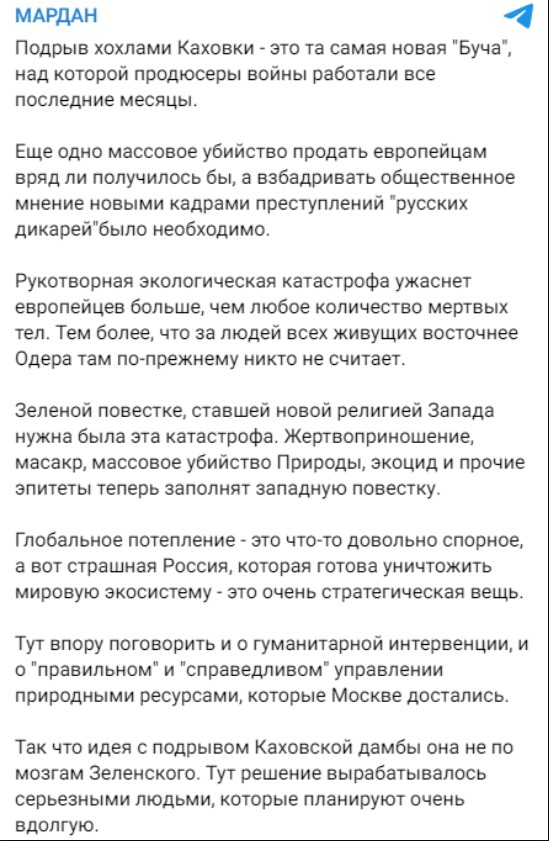
In the situation with the blow-up of the Kakhovka HPP, the Kremlin’s information machine resorted to the usual tactics, which worked on other crimes:
● shifting responsibility for their own crimes to Ukraine;
● simultaneous spread of a large number of “versions” to disorient the audience (including foreign one);
● convince Russians that “everything is under control” and “the special operation is going according to plan.”
6. US intelligence has information about Russia’s involvement in blowing up the Kakhovka HPP
The US government has intelligence confirming Russia’s responsibility for the HPP explosion and plans to declassify this information. This was reported by the American publication NBC News on Tuesday, citing two American officials and one Western official. One of the speakers explained that by blowing up the dam, Russians intend to make it more difficult for the Armed Forces of Ukraine to carry out offensive operations, in particular the crossing of the Dnipro, and cause a difficult humanitarian problem for Ukraine.
7. Scientists confirm the fact of the explosion at the HPP
Powerful explosions at the Kakhovka HPP were recorded by a magnetometer in Bucharest (Romania). This was reported by American researcher Richard Cordaro, PhD in Physics, University of Arizona.
Cordaro published a diagram showing the explosion in Nova Kakhovka with an error of 5 minutes.
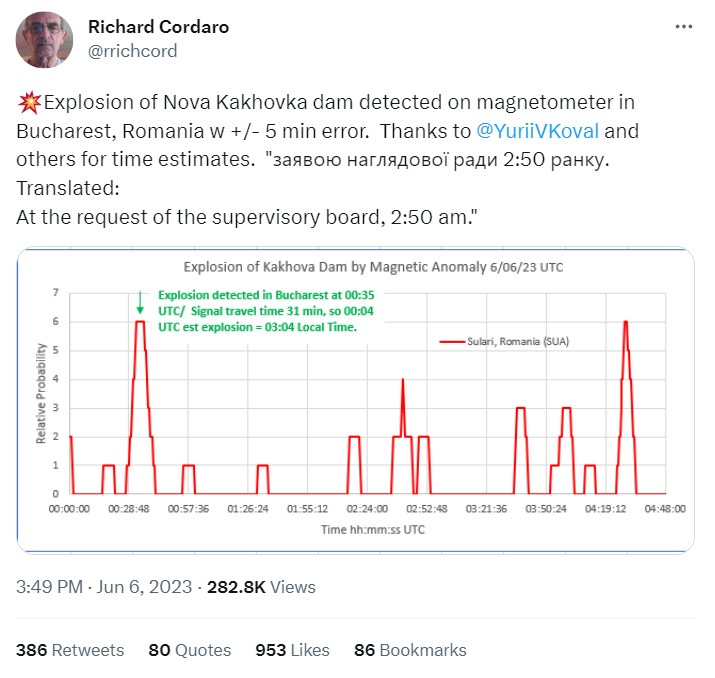
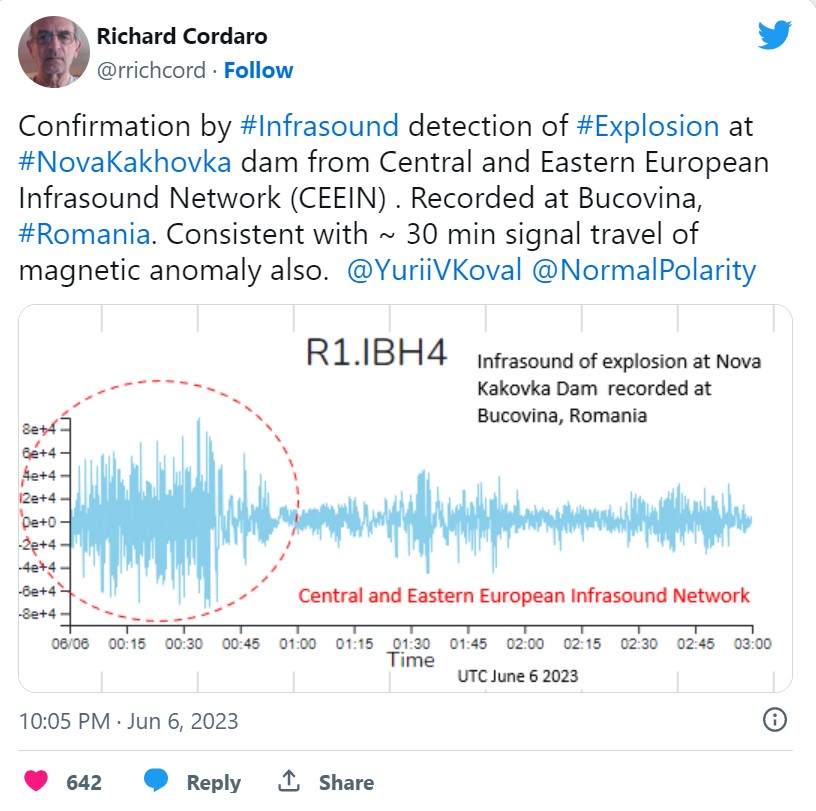
The scientist assumed that the main explosion was preceded by a series of preparatory, smaller ones, that had taken place a few hours before.
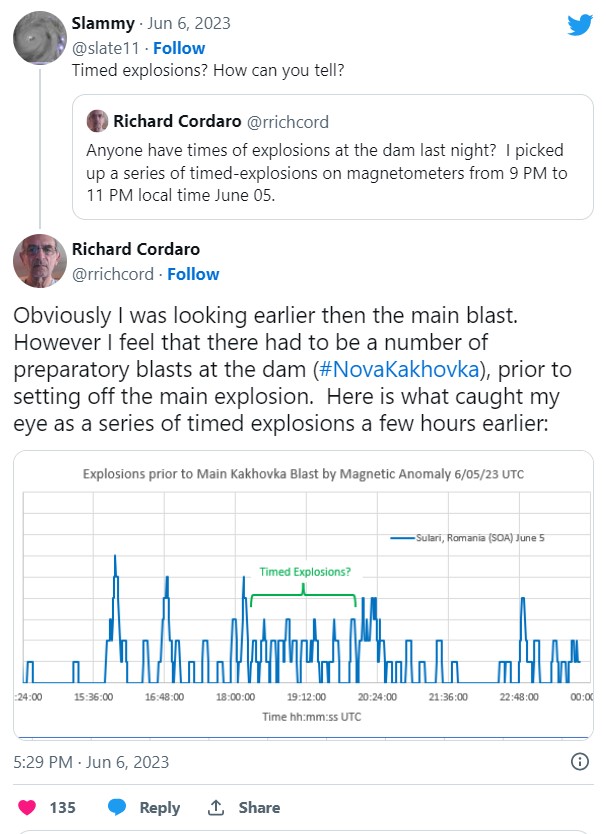
The scientist’s information is another proof that the HPP mined by Russians was actually blown up.
Conclusion.
Ukraine has always consistently stated that it does not intend to destroy the Kakhovka HPP, as it seeks to avoid negative environmental and socio-economic consequences.
The goal of Ukraine is the deoccupation of territories and the restoration of normal life on them, the revival of the economic potential of the country destroyed by the invaders.
Russia, with all its actions, has testified that it does take into account the life and health of Ukrainians, killing them daily with missiles, drones, and bombs.
Russians had a clear motive to blow up the dam — to make the lower reaches of the Dnipro an impassable obstacle to the Ukrainian counteroffensive. As noted above, they are repeatedly noticed both threatening and causing damage to the HPP.
In addition, the occupiers have shown themselves as barbarians who, when retreating, resort to the tactics of the “scorched earth.” Therefore, the flooding of the settlements of Kherson and Mykolaiv regions may indicate the preparation of the invaders for escape.
“The Russians’ actions that they are already trying to blame on just about anyone else are irresponsible, and terrorism in its purest form,” says Minister of Culture and Information Policy Oleksandr Tkachenko.
Source: Centre for Strategic Communication and Information Security

